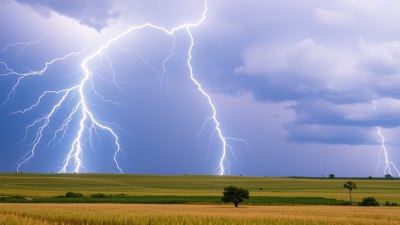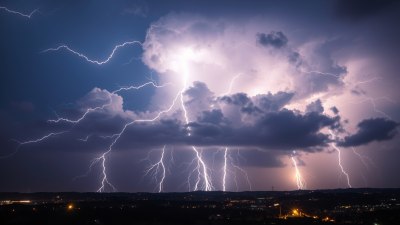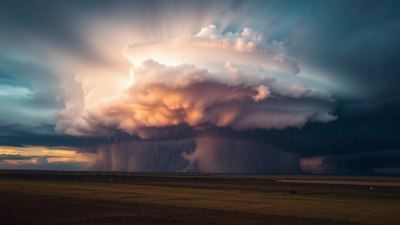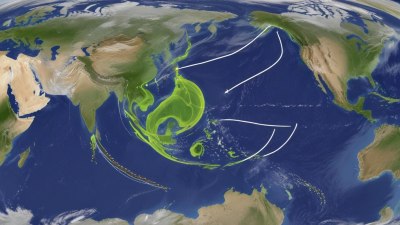How Weather Affects Migrating Birds More Than We Realize
Explore the profound impact of weather on bird migration patterns and behaviors.
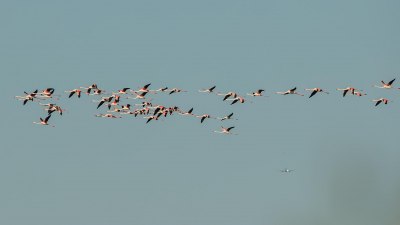
Migrating birds are a wonder of nature, showcasing remarkable endurance and navigation skills. However, these birds are profoundly influenced by the weather, often in ways that are not immediately apparent. In this article, we will delve into the various aspects of how weather affects migrating birds, examining their migration patterns, behavior, breeding, and survival rates.
The Basics of Bird Migration
Bird migration is a seasonal movement that many species undertake to find more favorable conditions for feeding and breeding. Most birds migrate in response to changing climatic conditions, primarily dictated by temperature, food availability, and daylight hours. However, environmental factors such as wind patterns, precipitation, and storms can drastically influence these migrations.
Weather Patterns and Bird Migration
One of the key factors affecting bird migration is the seasonal change in weather patterns. As days lengthen and temperatures warm in spring, migratory birds take to the skies in search of breeding grounds. However, unpredictable weather can disrupt these migrations. Cold snaps, rainstorms, and strong winds can cause delays or lead to dangerous conditions for birds attempting to cross large distances.
The Role of Temperature
Temperature plays a fundamental role in prompting migration. Birds have evolved to be sensitive to temperature changes, allowing them to migrate at optimal times. For instance, as temperatures drop in fall, many species instinctively begin their journey southward. However, unseasonably warm temperatures can confuse these migratory patterns, resulting in early departures or altered routes. Moreover, a lack of cold weather may hinder the necessary food sources, compelling birds to adapt and change their traditional migratory schedules.
Wind and Weather Systems
Wind conditions significantly affect bird migration. Many species rely on favorable tailwinds to assist their journeys, allowing them to conserve energy and travel longer distances. Conversely, strong headwinds can impede migration, forcing birds to seek alternative routes or delay their departure. This reliance on wind is crucial, as birds often time their migrations to take advantage of prevailing winds. Weather systems such as fronts and storms can create complex scenarios where large flocks might be caught unexpectedly, leading to injuries and fatalities.
Effects of Storms
Severe weather events, such as hurricanes and thunderstorms, can have catastrophic effects on migrating birds. These events can displace birds from their intended paths, introducing them to unfamiliar territories where they may struggle to find food and shelter. Storms may also result in the loss of habitat and food resources, creating long-term challenges for bird populations. Post-storm, the effects of flooding, destruction of nesting grounds, and loss of critical food supplies contribute to population declines and altered migration behaviors.
Climate Change Impact
The impact of climate change on weather patterns is becoming increasingly significant. As global temperatures rise, migratory birds face more erratic weather conditions. Changes in precipitation patterns, prolonged droughts, and unseasonably warm winters disrupt established migration timings and strategies. Research indicates that many species are shifting their migratory patterns in response to these changes, often resulting in mismatches in timing with food availability, leading to decreased reproductive success and survival rates.
Migration Timing and Phenology
Phenology, the study of cyclical biological events, is closely tied to bird migration. Climate influences the timing of natural events such as flowering plants, insect hatches, and the availability of food sources. Migrating birds rely on these cues to synchronize their arrival with peak food availability. A mismatch between the timing of migration and food sources, caused by climate change or weather disruptions, can lead to drastic declines in bird populations.
Humidity and Barometric Pressure
In addition to temperature and wind, humidity and barometric pressure play roles in bird migration. Many species are sensitive to changes in humidity, which can indicate upcoming storms or weather changes. Birds often use barometric pressure as a cue for migration; a drop in pressure often signals impending weather events. Birds frequently adjust their flight paths or resting periods based on these atmospheric conditions, illustrating the intricate relationship between birds and their environment.
Conservation Implications
The effects of weather on migratory birds have critical implications for conservation efforts. Understanding how weather influences migration can inform habitat protection, restoration projects, and policy development to minimize the impact of climate change. Protecting key stopover sites, where birds rest and refuel, can be pivotal for maintaining migratory success. Additionally, engaging communities in conservation efforts helps bolster bird populations and create awareness surrounding the impact of weather on wildlife.
Innovations in Research
Advancements in technology are enhancing our understanding of how weather affects migrating birds. Researchers use satellite tracking and geolocators to monitor migration routes, timings, and behaviors in real-time. These innovations allow scientists to gather data on how weather influences migration decisions, providing insights into adapting to changing climate conditions. Understanding these dynamics is essential for predicting the future of bird populations and developing effective conservation strategies.
In conclusion, the interplay between weather and bird migration is intricate and multifaceted, playing a crucial role in the survival and adaptability of these avian travelers. As we continue to face challenges brought on by climate change, understanding the implications of weather on migration becomes increasingly important. By fostering a greater appreciation for the complexities of bird migration, we can contribute to their conservation and ensure that future generations can witness this remarkable phenomenon.
